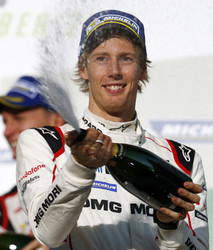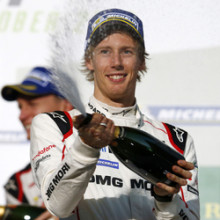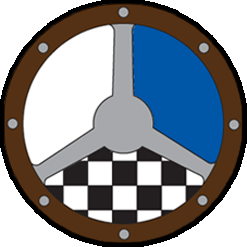Ask a pro
Receive advice directly from today’s top stars


Brendon Hartley
2015 FIA WEC champion & Porsche LMP1 driver
Brendon Hartley, FIA World Endurance Championship winner and ex F1 test driver, is the latest online driving instructor for SAFEisFAST.com.
The 27-year-old driver races in WEC for the Porsche LMP1 team, winning the series for the German marque in 2015. Hartley is a product of Red Bull’s young driver academy.
After excelling in the junior ranks both in Europe and back home in New Zealand, Hartley became F1 test and reserve driver for Scuderia Toro Rosso, Red Bull Racing and Mercedes, before switching to WEC with Porsche in 2014.
Hartley enters his fourth season of WEC competition in 2017, partnering Timo Bernhard and Earl Bamber in the #2 Porsche.
Brendon Hartley answers your questions!
-
Tony Machi
Everyone who is successful has an ‘aha’ moment. When and/or where was yours?




I guess there’s been a few moments. I grew up racing go-karts and I still remember my first race; I still remember that competitive emotion that I had running through my body. It’s quite funny because my brother is four years older, and there was no chance I was going to beat him because he’d been racing for four years already. It was the only time we ever raced against each other, in my first race, and I remember at the first test day my brother was god-knows how many seconds a lap faster than me, and I was already asking my father why I had different gearing because I was so much slower, and whether the tires were the same, and that was when I was six-years-old! I did get lapped in my first race, and I’ll never forget the competitive feeling I had after that.
I guess also in some dark times in my single-seater career, when I had a couple of years when I didn’t enjoy it and I was a bit flat because I was doing too much. Making the move to endurance racing was a real ‘aha’ moment. I loved the style of racing, the traffic, the management of tires, the team element I really enjoyed, and then going to Le Mans for the first time was really me falling in love with racing all over again.
I think any sportsperson will know that yes, on the outside it’s the dream job, but there’s times when you don’t enjoy it, and coming back to endurance racing was one of those moments for me. I learnt to love racing in a whole new light. -
BeRacing
When it comes to comparing data. What channels of information do you look for to compare first in order to improve your performance? Good luck this year!




We have many data fields available to us, and every driver is different. I tend not to look too much into it, although I used to, but I kind of realised through experience that analysing too deep into the data can also be detrimental, because I like to drive quite naturally.
The first thing I generally look at is the speed trace, so immediately you can highlight somewhere that you’re braking too early, or if you’re braking too late, if you have a different minimum speed, different exit… If you see something where there’s another driver doing something completely different to you and he’s getting a benefit, you can immediately ask, ‘ok, what’s he done differently?’. You can’t see everything from the speed, but it’s the first place [to look], and then you start look at braking, throttle and steering, and then you start to look at the nitty gritty of the attitude on the car, more into the braking, when you’re getting on the power, how you’re managing all those things etc. That’s when you start to get a bit more complex. You’ve got driving line, GPS, video…
For someone who’s learning it’s very different, but after a while you’re so used to looking at the data that you need very limited channels to understand what you need to do to improve. -
Virginia Guzman
Toyota seems to be your biggest opponent for this season. How are you and the team preparing to defeat them?




Focusing on ourselves is always a biggie, and in any sport I guess putting emphasis on what ourselves can do is always a good one. Obviously we need to beat the sister car as well; it’s a friendly rivalry, but they can also be one of our main competitors. But actually we’re just trying to start the season how we left off last year, with no mistakes. Last year we tried to tell each other as drivers, ‘let’s go out there and treat it like a test day’. We always used to say ‘Aragon long runs’, that’s where we do most of our endurance testing. Just forget it’s a race weekend, just go out there like it’s a test day. We’ve just got to keep doing what we’re doing.
-
Lewis Smith
Should I head into the start of a race with a plan to get a good start/make up some positions, or just react to the situation?




I think you have to react to the situation. You can’t ever have a plan for the start, however it’s good to go through scenarios in your head. I always used to do it, especially with the standing starts: figure out who’s around you and what potentially could happen. But in reality, you have to react very quickly to different scenarios. But it’s good to have a few plans in your head; you can’t just stick to one because it never works!
-
Anonymous
Different drivers apply the throttle differently – and the engineers can see what works best. Do you change your driving style or adapt to what the data tells you?




It’s probably a more complex question than you think because we have two engines [in LMP1 hybrid cars], an electric engine and a combustion engine, and they’re not directly linked. Sometimes something we adjust as drivers is the front-to-rear throttle distribution and how that’s working, but generally we get fixed on a pretty linear throttle map that we all like. It’s something that you can adapt to quite quickly as a driver. Even if you don’t like something to start with, the throttle is like an extension of the body and something you get used to fairly quickly.
-
Jasmine Thomas
Hi Brendan, I’m currently making my way through the ranks in junior single-seaters and need some advice. How do you reduce your steering input to get more speed? Is it purely with on-track practice or should I be studying data more?




I think there’s a lot of feeling in it. There’s only so much you can do with data. I think I know what you’re trying to ask Jasmine, and I think the common mistake with people when they’re learning to drive is going into a corner with too much speed, lots of steering angle and just understeering and missing the exit completely. What I always say to people is that the most important part of the whole corner is where you hit the brake pedal. If you hit the brake too early, at a certain point you’ve not got enough speed, and when you come off the brake the front of the car rises up and you’re going to understeer, so that whole braking phase is not just where you hit the brake but also where you’re coming off the brake, so you want to hold the brake into the corner as long as possible to keep the front of the car down.
If you brake too late, you’re going to turn in with too much brake pedal and that’s also going to cause understeer, so getting that happy medium and the feeling on the brake, that’s the most important part of your job, so you can set the car up for the rest of the corner.
I always say that if you get the braking point right, the rest will come naturally, but that’s the first area to work on, and it’s also not having too much brake while you’re steering that you’re loading the front, and not too much that you’re unloading it, or putting too much load through the tires. The braking point can affect the corner in ways you don’t always realise. -
Daniel Head
Is opposite lock ever the fastest way around a corner?




In our cars, no! When we talk about oversteer, it’s a bit different from a rally car. I actually did some ice driving last January and I loved it. Obviously in those cars you have to have opposite lock to go quick, but in sportscars with the vehicle dynamics and how much downforce we have it doesn’t really work.
-
Tony Palmer
Do you like a light throttle pedal or a heavy one?




You need to have some kind of feeling behind it and some kind of damping. With ours there is no wire, it’s electronic, so you’re not pushing against a cable or pulling a throttle body like you would in a car from years ago, so that’s something that they can set up to have a damper behind the throttle, and having a little bit of damping is actually quite nice as well because when you go over a bump, at least if the pedal is damped then you’re not over-correcting the throttle. If the pedal is too light then it’s really not nice to have.
-
Richard Blythe
You got caught out last year at Silverstone lapping traffic. What happened and what did you learn from it?




I came through Turn One, which is flat out for us, and there was a GT car ahead going a lot slower. Normally they (GTE-PRO & GTE-AM cars) don’t use all the road there, but obviously they’re completely entitled to use all of the road on the exit of Turn Two, but we don’t expect they’ll be there because you need to be back [on the inside] for the left at Turn Three. I misjudged it; I thought he was not going to use all the road and I was going to have enough time, and actually if it was half-a-second earlier I would have made it through, and if I was two seconds later I would have gone on the inside because I would have seen that I wouldn’t make it.
It’s very easy for people to say, ‘you could have saved two seconds here and there’, but what they don’t realise is that we’re passing traffic 10/20 times a lap, and if you gave two seconds away on every overtake then you wouldn’t be in the lead of the race.
So 100% it was something to learn from, and I did – actually I had a great end to the season in 2016, I was really happy with how I recovered in Spa, maybe I was being a little bit more cautious in traffic then I ordinarily would be. There’s a real fine line between the human element of dealing with other drivers and trying to read their car. It was a really hard one to take, but I definitely learnt a lot from it. Unfortunately it is part of the game but at the same time there’s always something to learn. -
Toby Simons
Do you head into the first corner of a race differently from a rolling start compared to a standing start?




It’s definitely different because you approach the corner quicker and there are less variables. With a standing start, you can be passing someone who started three rows ahead of you because they had a bad start. Generally with a rolling start there are less variables from that point of view because you’re already rolling at 80/90kph, and there’s less variables in terms of passing and different lines.
-
Anonymous
Brendon, when you first came to Germany – did you ever regret your decision to sacrifice your home for racing?




In the early years it was definitely tough, I had a bit of home sickness, but I was always trying to be a professional driver. That’s all I thought about as a kid, and I left school at 16 and my friends and family. I never really thought that, no. People ask me what I’d be doing if I wasn’t driving, and I never really thought about it, because I knew I had to make it work somehow and in the end it turned out ok. If it didn’t turn out well then I don’t know what I’d be doing now, but no, I never thought about not doing what I’m doing. I had some bad times when I wasn’t enjoying it, but I didn’t really have another option in my head.
-
Peter Albert
Do you already have future plans after the WEC time? I would like to get to know you personally, is it somehow possible at the Nordschleife? Thank you!!!




I would love to do the Nurburgring 24 Hours, I’ve said that before. I’ve already done three races this year before Silverstone (first round of the World Endurance Championship). My first race of the season was the Dubai 24 Hours in a Porsche 911 GT3 R, so that was my first taste of a 911 and we won a race on my debut, which was great. But actually doing the Nurburgring 24 hours is something I’d love to do. In the short-term future, as long as I’m doing WEC, it’s tricky as it’s the same time as Le Mans, and we’re very focused at that time of year on the Le Mans 24 Hours and our team boss isn’t keen on us being too busy!
-
Daria
A little bird told me, that your first 2014 Porsche had a name. What was it?




Actually no, not that I can remember – if it did I wasn’t aware of it!
-
Anne
What’s your favourite track? See you in Spa!




‘Favourite track’ is a tricky one I get asked it lot, and I can never really say one so I have a list. There’s Le Mans which is a very unique track in terms of being part-road, having massively high speeds, we hit v-max 3 or 4 times, and then you race on part of a purpose-built race track too. It’s also the event; standing on the pit wall there’s always an electric atmosphere, and also representing Porsche there. I fell in love with Le Mans when I started endurance racing so it holds a special place in my heart.
Spa is a great track, I’ve always enjoyed racing there, and the Macau Grand Prix track; I raced there three times when I was in Formula 3,and I love street tracks. Bathurst in Australia is another one and there’s Monaco too. They all have their own things to love about them. -
Andre
Would you race in IMSA and what track you like the most in the USA?




I did the Grand-Am championship (Now IMSA) in 2013 before I came to Porsche and WEC. I completed the season in a Daytona prototype, and I’ve actually been back every single year since to do the Daytona 24 Hours, so I think I’ve done it four or five times. I love racing in the US; in 2013 we had one win which was at Elkhart Lake, which would probably have to be my favourite track there.
-
Josh Gibson
How do you let backmarkers know you’re approaching them? Are there any techniques you use?




A lot of it is body language of the car. If I’m flashing or not, which I don’t normally do because our lights are so bright, generally they see us anyway, but what I try and do is if I’m not going to pass, I try to make an effort to be really behind them, to let them know that I’m not going to burrow up the inside because there can be a scenario where because when we’ve got so much acceleration, if I dive up the inside, my exit is going to be so poor that I would have been better staying behind and getting a monster exit, and that’s actually better for both cars. You want to let them know at that point so that they’re not nervous and not looking in the mirror when they’re turning in. It’s really just the body language of the car and where you’re positioning the car on the entry to a corner.
-
James Davies
How do you know when to go for it and when to play it safe at the first bend on the first lap?




That’s a tricky one and it comes with experience as well. When you’re younger you generally go for gaps that maybe you shouldn’t. I always think back to when I was 13 or 14-years-old and some of the moves I pulled off on the first laps; they shouldn’t have worked, but I think half the time it was the older experience guys looking in the mirrors and knowing that I was 13 and was going to do anything I could do to get by.
Again, it’s about evolving with experience and comes back to risk vs reward, and something you’re constantly trying to decide 1000x a second in those situations. -
Brent Peters
What is it that makes Kiwi drivers stand out? Especially with the competition from the euro powerhouses pumping out so much young talent.




That’s a question I get asked a lot. Yes you’re right, there’s so many Kiwis – especially during the last ten years – competing around the world and flying the flag, so I’m one of many and I’m very proud of that. I think in general in New Zealand we’re quite motorsport mad. We love cars, not just on the race tracks, but on the road too. We have a lot of race tracks and a lot of history, and a real ‘do it yourself’ attitude. When I grew up I was working on a go-kart after school and changing the engine in my Formula Ford car when I was 13-years-old. It was a family thing because my father built race engines, and a lot of the time as Kiwis growing up we were very involved ourselves with the mechanics of the cars etc.
We also have great [race] categories in New Zealand – very competitive. I was lucky to have the Toyota Racing Series when I was coming through, which now has a lot of international drivers competing on very high-level tracks. In New Zealand I went racing for a very small budget in comparison to coming to Europe. I never had the money to go to Europe, but we managed to find a way to race in New Zealand with good supporters and a lot of passionate sponsors that have helped many of us drivers.
I think the next thing is actually to come and compete in Europe, I think people respect that it’s a big commitment for us, and when we make the trip we’re pretty committed. I remember when I got dropped by the Red Bull Drivers Programme in 2010, I was getting told to ‘pick yourself up’ and ‘find your own way’, and I didn’t really have much option. I was committed to what I was doing on the other side of the world. I think people give us a lot of respect because of the fact that we’ve come a long way and that we’re committed, and also because of our motor sport history, which opens up a lot of opportunities. -
Alex Simpsons
Is getting through traffic fast the key to winning endurance races?




It’s definitely a part of it, especially when you compare with single-seaters. It’s an element that doesn’t exist in other categories, so getting through safely and fast is a big part of our jobs. Judging the car in front, judging who’s driving it, judging what line he’s taking, risk management, risk vs reward… It’s a big part of our job. Teamwork is also a big part of it, working with your teammates and sharing that knowledge. A lot of the time as teammates we’re talking about traffic, so ‘this car, that car, how to manage energies…’ it’s a big part of the job and can lose you the race but also win you the race.
-
Enrique Ramos
How do you decide when to pass and when to wait to pass backmarkers?




There’s not an easy answer to that because every single scenario is different. There are so many variables: What section of corners are coming up? Is it important to pass the car before? Who’s driving the car? Which car is it? How quickly will they be going through that section? It’s all about risk vs reward. It’s a very complex answer, and it’s a case-by-case scenario, and something that you’re constantly learning as a driver. Sometimes you get it right, sometimes you get it wrong, and when I say ‘get it wrong’, it might be a case of saying, ‘ok, I shouldn’t even have shown my nose, I should have just let the guy know I’m not passing so he can take the corner properly and we can both not lose time’. You’re constantly learning and evolving how you get through the traffic, and that’s where experience becomes ultra-important in endurance racing.
 Road Racing Drivers Club
Road Racing Drivers Club
 Share
Share







